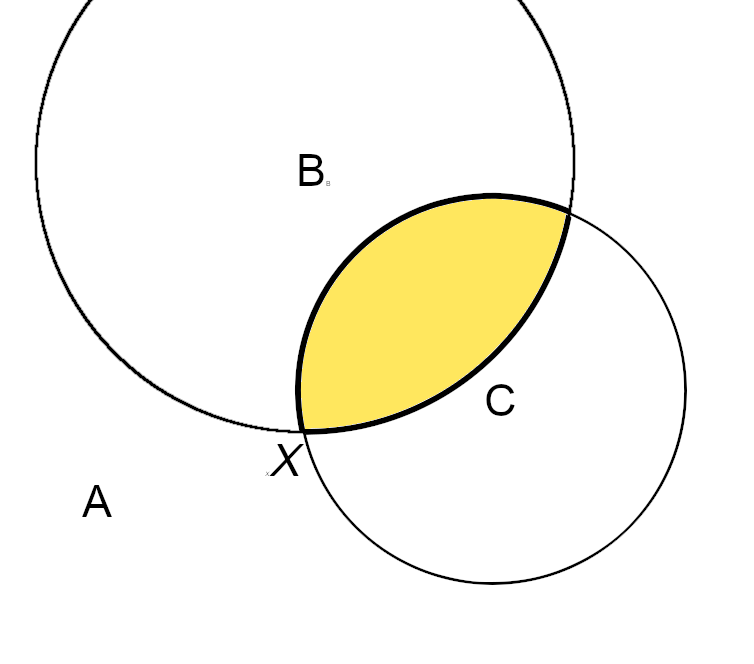McKelvey–Schofield Chaos Theorem on:
[Wikipedia]
[Google]
[Amazon]
The McKelvey–Schofield chaos theorem is a result in  The figure shows an example. There are three voters in the electorate, with ideal points A, B and C. Voters prefer policies that are closer to them, i.e. they have circular
The figure shows an example. There are three voters in the electorate, with ideal points A, B and C. Voters prefer policies that are closer to them, i.e. they have circular
social choice theory
Social choice theory or social choice is a theoretical framework for analysis of combining individual opinions, preferences, interests, or welfares to reach a ''collective decision'' or ''social welfare'' in some sense.Amartya Sen (2008). "Soci ...
. It states that if preferences are defined over a multidimensional policy space, then majority rule is in general unstable: there is no Condorcet winner
An electoral system satisfies the Condorcet winner criterion () if it always chooses the Condorcet winner when one exists. The candidate who wins a majority of the vote in every head-to-head election against each of the other candidatesthat is, a ...
. Furthermore, any point in the space can be reached from any other point by a sequence of majority votes.
The theorem can be thought of as showing that Arrow's impossibility theorem
Arrow's impossibility theorem, the general possibility theorem or Arrow's paradox is an impossibility theorem in social choice theory that states that when voters have three or more distinct alternatives (options), no ranked voting electoral syste ...
holds when preferences are restricted to be concave
Concave or concavity may refer to:
Science and technology
* Concave lens
* Concave mirror
Mathematics
* Concave function, the negative of a convex function
* Concave polygon, a polygon which is not convex
* Concave set
* The concavity
In ca ...
in . The median voter theorem The median voter theorem is a proposition relating to ranked preference voting put forward by Duncan Black in 1948.Duncan Black, "On the Rationale of Group Decision-making" (1948). It states that if voters and policies are distributed along a one-d ...
shows that when preferences are restricted to be single-peaked on the real line, Arrow's theorem does not hold, and the median voter's ideal point is a Condorcet winner. The chaos theorem shows that this good news does not continue in multiple dimensions.
Richard McKelvey
Richard Drummond McKelvey (April 27, 1944 – April 22, 2002) was a political scientist, specializing in mathematical theories of voting. He received his BS in Mathematics from Oberlin College, MA in mathematics from Washington University in St. ...
initially proved the theorem for Euclidean preferences. Norman Schofield
Norman James Schofield (January 30, 1944 – October 12, 2019) was a Scottish-American political scientist, the Dr. William Taussig Professor of Political Economy at the Washington University in St. Louis.
extended the theorem to the more general class of concave preferences.
 The figure shows an example. There are three voters in the electorate, with ideal points A, B and C. Voters prefer policies that are closer to them, i.e. they have circular
The figure shows an example. There are three voters in the electorate, with ideal points A, B and C. Voters prefer policies that are closer to them, i.e. they have circular indifference curves
In economics, an indifference curve connects points on a graph representing different quantities of two goods, points between which a consumer is ''indifferent''. That is, any combinations of two products indicated by the curve will provide the c ...
. The circles show B's and C's indifference curves through a policy X. If a candidate were to propose X, then the other candidate could beat him by proposing any point in the yellow area. This would be preferred by B and C. Any point in the plane will always have a set of points that are preferred by 2 out of 3 voters. In fact, you can get from any point to any other point by a series of majority votes.
References
Social choice theory {{Econ-theory-stub